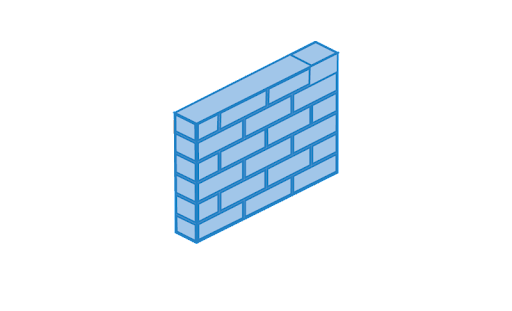Network Implementations Study Guide for the CompTIA Network+
Page 1
General Information
About 19% of the questions on the CompTIA Network+ exam concern network implementations. Of these, about half of the questions begin with a scenario, so you’ll not only need to understand the concepts involved in implementing a network, but you’ll need to be able to apply them to specific situations.
Network Devices
There are numerous network devices that you should be familiar with for the CompTIA Network+ exam. You need to be able to compare and contrast different devices, their common features, and the appropriate placement for each device on a network.
Networking Devices
A networking device is an electronic device, either hardware or software, that facilitates communication and interaction between two or more devices on a network. Networking devices are used for data transmission through a network, with each device transmitting data based on their specific function.
Layer 2 switch—A switch connects multiple devices on a network and forwards data between devices on a network based on the source and destination information attached to the data, including assigned port numbers. A Layer 2 switch is a traditional switch that uses Layer 2 hardware addresses, or media access control (MAC) addresses, to forward data through the network. In network diagrams, the following universal symbol is used to indicate a switch:

Layer 3 switch—A Layer 3 switch is one that is capable of performing the functions of both a traditional switch as well as a router, which forwards data at Layer 3, or the network layer.
router—A router is used for connecting two or more network segments together, creating an internetwork. A router uses Internet Protocol (IP) information to transmit data to the appropriate location on the network. The router is the networking device that provides the connection to the internet. In network diagrams, the following universal symbol is used to indicate a router:

hub—A hub is a Layer 1 dumb device, meaning that it has no computing capabilities. A hub is used to connect multiple devices to a single device and sends all data received to all devices and network segments connected to the hub. In a network diagram, the following universal symbol is used to indicate a hub:

access point (AP)—An AP, also known as a wireless AP or WAP, is a Layer 2 networking device used to connect devices wirelessly to a wired network connection or router. Some APs can be used to connect to a separate router or may have routing functionality integrated, commonly called a wireless router. In a network diagram, the following symbol (or one closely resembling it) is used to indicate an access point:

bridge—A bridge connects two similar network segments together while still keeping the segments separated to reduce collision domains. A bridge is a Layer 2 device that uses hardware (or MAC) addresses to forward traffic.
wireless LAN controller (WLC)—A WLC centralizes multiple access points into a single device or controller. It is used to manage and configure all connected APs. A WLC functions in both Layer 2 and Layer 3.
load balancer—A load balancer is used to distribute traffic between two or more devices attached to a single IP address. A traditional load balancer functions in Layer 4, or the transport layer, and distributes traffic based on distribution configuration, such as round-robin or least number of connections. In a network diagram, the following universal symbol is used to indicate a load balancer:

proxy server—A proxy server provides an interface between a client requesting a resource and the server housing that resource. A proxy server resides at Layer 7, or the application layer.
cable modem—A modem, or modulator-demodulator, is a Layer 1 device that receives analog signals and converts them into digital signals that can be understood by other networking devices. A cable modem receives analog signals via a coaxial cable. In a network diagram, the following universal symbol is used to indicate a modem:

DSL modem—A DSL modem receives and transmits data via a telephone line using an RJ-11 connector.
repeater—A repeater, also known as a signal booster, is a Layer 1 dumb networking device that receives signals and amplifies or regenerates the signals before transmission.
voice gateway—A voice gateway is a Layer 4 networking device that converts analog telephony data into digital data and vice versa. A voice gateway acts as the intermediary between a voice over Internet Protocol (VoIP) network and the telephone provider.
media converter—A media converter is a Layer 1 networking device that connects two different media, such as coaxial cable and fiber, to allow for communication.
intrusion prevention system (IPS)/intrusion detection system (IDS)—An IPS or IDS device is a Layer 3 networking security device that monitors network transmissions for malicious activity. An IPS device is inline and can actively prevent malicious traffic, while an IDS device sits outside the flow and only collects and monitors traffic flow data.
firewall—A firewall is a networking security device that monitors and filters incoming and outgoing traffic based on preset parameters. A firewall can be implemented at multiple layers of the OSI model depending on functionality needs. In a network diagram, the following symbol (or something similar) is used to indicate a firewall:

virtual private network (VPN) headend—A VPN headend, or concentrator, receives, manages, and secures multiple remote VPN connections while connecting them to the central network. A VPN headend can reside at multiple layers of the OSI model, depending on functionality needs.
Networked Devices
Networked devices are the endpoint devices that can be utilized in a network architecture. Networked devices range in functionality and complexity, from simple internet of things (IoT) devices to highly complex industrial control devices, and they can all be accessed through the connected network.
Voice over Internet Protocol (VoIP) Phone
A VoIP phone is an end device that provides digital telephony communications via IP rather than a traditional analog telephone communication connection.
Printer
Printers can be used as shared network resources by utilizing a network interface card (NIC) installed in the printer or through a centralized print server connected to the Ethernet network.
Physical Access Control Devices
A physical access control device is any networked device that is used to allow or prohibit access to a location or area by electronically validating a credential, such as a radio-frequency identification (RFID) badge or a near-field communication (NFC) device, against an authorization server.
Cameras
Cameras can be networked devices when they employ the use of digital signals for video feed generation, which are sent to a central server via the Transmission Control Protocol/Internet Protocol (TCP/IP) for recording, processing, analysis, and monitoring.
Heating, Ventilation, and Air Conditioning (HVAC) Sensors
HVAC sensors can be intelligent networked devices that have advanced functioning, such as automatic environmental control adjustments based on parameters set via a centralized interface.
Internet of Things (IoT)
IoT is a generalized term for devices that have internet connection capabilities. IoT devices have the ability to transmit data to and receive data from a centralized network interface via multiple connection methods, such as Bluetooth, wireless, or cellular.
smart refrigerator—A networked refrigerator (smart fridge) is one that is connected to the internet, which owners can use to communicate with the refrigerator.
smart speakers—Smart speakers are internet-connected speakers with the ability to communicate via electronic means or voice command. Smart speakers also often have the ability to communicate with other devices connected on the local area network (LAN).
smart thermostats—These are internet-connected thermostats that allow for remote configuration as well as automated adjustments for optimal performance.
smart doorbells—These are internet-connected doorbells that provide multiple capabilities, including remote video viewing, remote listening, and speech transmission, as well as the ability to monitor, analyze, and respond to captured data.
Industrial Control System (ICS)/Supervisory Control and Data Acquisition (SCADA)
An ICS or SCADA is an industrial networked system that employs the use of network-connected sensors to monitor all aspects of an industrial environment, as well as proactively detect, alert, and respond to potential problems or issues. ICS is used primarily in manufacturing environments, while SCADA is primarily used in industrial environments such as power grids.
All Study Guides for the CompTIA Network+ are now available as downloadable PDFs